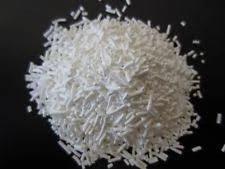
e451 food additive
Understanding E451 The Multifaceted Food Additive
E451, also known as Sodium Tripolyphosphate, is a food additive that plays a crucial role in the food industry, particularly in the manufacturing of processed foods. It belongs to the category of emulsifiers and stabilizers and is used for a variety of purposes, from enhancing texture to preserving moisture in food products. As consumers become increasingly conscious of what they eat, it is essential to understand the implications of such additives in our diet.
What is E451?
E451 is derived from phosphoric acid and is often used in conjunction with other phosphates. It is recognized for its ability to bind with water, making it an effective agent in various foods. Typically, it appears as a white, granular powder and is soluble in water. Its primary function in food products is to improve texture, stabilize emulsions, and serve as a preservative by inhibiting microbial growth.
Common Applications
The use of E451 can be found in numerous food items. It is commonly used in seafood products to enhance moisture retention, which helps prevent the shrinkage of fish and shrimp during cooking. In processed meats, it acts as a texturizer, improving the overall mouthfeel and juiciness. Moreover, E451 is widely used in dairy products, baked goods, and even certain types of beverages where it enhances stability and shelf life.
In addition to its functional benefits, E451 also plays a role in controlling pH levels in products, which can further prevent spoilage and extend expiration dates. This versatility has made it a staple in the food processing industry, where maintaining quality and safety is a top priority.
e451 food additive

Safety and Regulations
The safety of food additives, including E451, is a critical aspect of food science. Regulatory bodies such as the European Food Safety Authority (EFSA) and the Food and Drug Administration (FDA) have established guidelines and acceptable daily intake levels for various additives. According to current research, E451 is generally recognized as safe when consumed within the regulated limits. However, excessive intake may lead to health concerns, particularly for individuals with kidney disorders, as excess phosphorus can impact kidney function.
Consumer Awareness
As consumers, it is essential to be aware of the additives present in our food. While E451 serves functional purposes in preserving and enhancing food products, understanding its role can empower individuals to make informed choices. Reading food labels can provide insights into the types of additives used, and choosing products with fewer additives may align with personal health goals.
Conclusion
E451, or Sodium Tripolyphosphate, is a multifaceted food additive that plays a significant role in improving the quality and safety of a wide array of processed foods. While its uses are beneficial to food manufacturers, consumer awareness and education remain vital. As the demand for transparency in food labeling increases, consumers are encouraged to educate themselves about food additives to make smarter dietary choices. Ultimately, understanding what goes into our food can help us live healthier lives while enjoying the convenience of processed foods.
-
Buy High-Quality Trichloroisocyanuric Acid for Sale | TCCA 90% SupplierNewsAug.30,2025
-
Pure Sodium Dichloroisocyanurate Dihydrate | Powerful DisinfectantNewsAug.29,2025
-
Industrial Chemicals: Quality & Purity for Every IndustryNewsAug.28,2025
-
Nitrile Rubber Honoring Strict Production StandardsNewsAug.22,2025
-
Aspartame Ingredients Honoring Food Safety ValuesNewsAug.22,2025
-
Fertilizer for Balanced Plant NutritionNewsAug.22,2025
-
Cyanide Gold Processing with High Purity AdditivesNewsAug.22,2025
Hebei Tenger Chemical Technology Co., Ltd. focuses on the chemical industry and is committed to the export service of chemical raw materials.
-

view more DiethanolisopropanolamineIn the ever-growing field of chemical solutions, diethanolisopropanolamine (DEIPA) stands out as a versatile and important compound. Due to its unique chemical structure and properties, DEIPA is of interest to various industries including construction, personal care, and agriculture. -

view more TriisopropanolamineTriisopropanolamine (TIPA) alkanol amine substance, is a kind of alcohol amine compound with amino and alcohol hydroxyl, and because of its molecules contains both amino and hydroxyl. -

view more Tetramethyl Thiuram DisulfideTetramethyl thiuram disulfide, also known as TMTD, is a white to light-yellow powder with a distinct sulfur-like odor. It is soluble in organic solvents such as benzene, acetone, and ethyl acetate, making it highly versatile for use in different formulations. TMTD is known for its excellent vulcanization acceleration properties, which makes it a key ingredient in the production of rubber products. Additionally, it acts as an effective fungicide and bactericide, making it valuable in agricultural applications. Its high purity and stability ensure consistent performance, making it a preferred choice for manufacturers across various industries.





